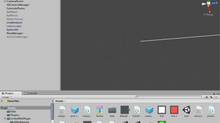Performative Avatars | Fuse & RO (W1)
Questions from Readings
(1)
Does the affect of a simulation or game depend on its immersion level (control vs. be, realism vs. fantasy)? Is it actually "better" to have a spectrum of immersion level?
I think in a typical scenario, a user would engage with a simulation on different immersion levels. On some instances in the game users feel in control, on another (very engaging instance) the users become the avatar, and on some other instances users do both. But certain medium such as VR imposes a first-person view. A player in VR always is the avatar, and never controls the avatar. What does it mean to have this monotonous immersion level?
(2)
An interesting aspect in playing or watching a simulation is our ability to simultaneously empathize and dissociate. Playing shooting games is fun because we can dissociate virtual killing from a real physical murder, but at the same time we demand compelling stories and protagonists we can empathize with. I think part of the reason why we can do both at the same time, is because we can differentiate, to a certain extent, a virtual simulation from the physical world.
But as technology becomes more immersive and more children are born into this world of mixed reality, would we lose this ability to dissociate + empathize, and differentiate realities over time? (I’d argue we kind of have lost this ability with Instagram and other social platforms).
How conscious is this decision to differentiate or not differentiate?
Fuse
The avatar creation process in Fuse started with selecting a face. The closest face that I could find was a somewhat Asian-looking woman face. This was not the first time I used Fuse, so I went in with the expectation that I could fine-tune the features to my actual features.
Next, I selected the body, arms and legs. To be very honest I did not really pay attention to this part because (a) I do not really know how my arms and legs look like, and (b) I don’t think they contribute much in terms of making the avatar look like me. What I found interesting was that the engine allowed me to mix and match “female" and “male” body parts, including head and face.
Then I tried to customize the avatar’s feature using the “Customize” tab, but I couldn’t drag any of the slider. Maybe it was a bug? Or maybe my computer did not have enough processing power. Either way, the facial fine-tuning I looked forward to was not available.
I moved on to selecting the textures, changing the avatar’s skin and eye colors, as well as its hair situation. I could adjust these features to my liking, but the avatar did not look like me still, so I decided to move ahead and put on some clothing on the body.
Selecting the clothes was really a downer for me, because the selection is definitely not my style nor expansive. The closest that I could find was a Hunger Games type of outfit, which I honestly would not wear in real life. I was pretty amused by the options available, though. It was clear that Fuse was made to cater to the needs of a typical first-person-shooting game.
One breakthrough point that I had was the surgical mask. With the avatar face covered, I was relieved from having to make the face look like me! That encouraged me to be more playful with selecting the face (found one with eye shape closest to mine) and the outfit (dress + pants + gloves looked very amusing).
The final avatar looks like me from the back.


Ragnarok Online (RO) Avatar
Ragnarok Online (RO) is this MMORPG that I played when I was a kid, probably around 11-13 years old. It was a fantasy game where you start as a novice, fight monsters and rank up to a stronger job, and interact and trade with fellow players and NPCs. The game was at its popularity-peak around 2010-ish, so the technology was definitely not as advanced, and feature choices limited.
I googled "RO avatar creator” and found one online that is not official, but close enough.
I chose to create avatar from this older game because of several reasons:
I was obsessed with this game, and I did use RO characters extensively as my cursor.
While RO was also a game, the genre and the market it was designed for greatly differ from Fuse’s.
First of all, I had to select the gender of my avatar. It gave me the generic blond, short haired guy face by default. Next was selecting the outfit from a job class. I remembered I was an Archer, so I chose the Archer outfit. So far, not many choices.
Then I moved on to selecting hairstyle, which had more options. I tried my best to customize the hairstyle to match my real life hair, but the interface was badly designed and I gave up.
Selecting the accessories, however, was really enjoyable. There were many options that I recognize from the original game, and I hold such attachment to these low-res, pixelated virtual accessories because I had to work hard for them (i.e complete quests). I played around with some poses and that was all.
The final avatar looks nothing like me. But I like it!

Comparing the 2 Avatars
Obviously, the two avatars look nothing like each other. 3D vs. 2D and 2018 vs. 2010 aside, there are couple of points that I find interesting to highlight.
(1) Both systems, with their default options, show what kind of “bodies” their creators think would be received well in their respective markets. That said, RO avatar options were explicitly influenced and limited by their in-game aesthetics, while Fuse’s default options are more of an implicit imposition.
(2) I was more critical of and dissatisfied by Fuse because it allowed more customization, or should have allowed even more customization.
(3) I like RO avatar a lot more because I could do a lot more things (make conversations, trade items, do quests, get married) with the avatar. What I could not achieve in physical realism I could compensate with (a) cute aesthetic I could agree with, and (b) more agency in using the avatar.














